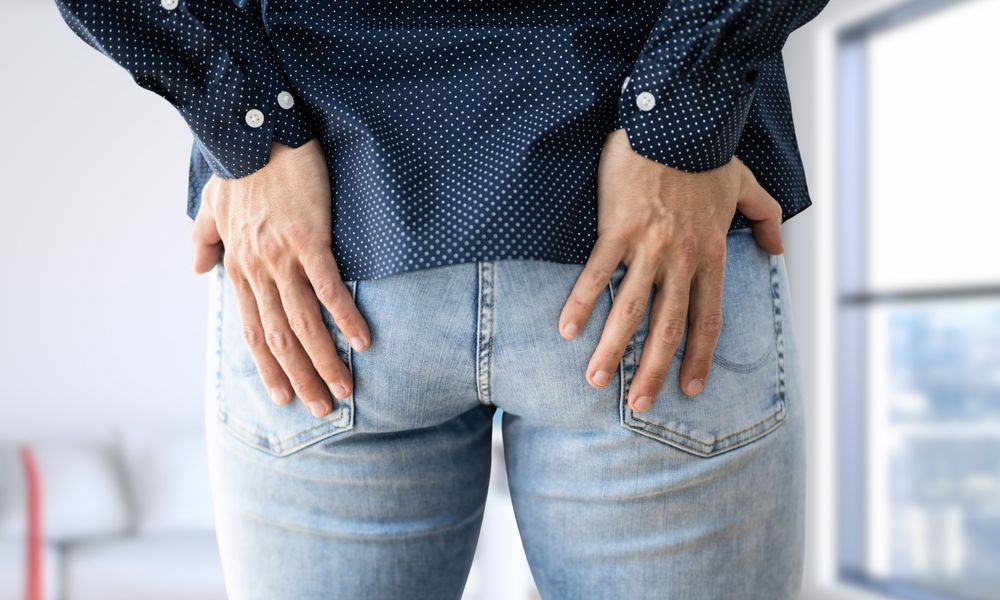Why is KP Worse on Buttocks? Uncovering the Causes and Solutions
As a beautician, understanding skin conditions is crucial for providing the best care to your clients. One common skin condition that often causes concern is keratosis pilaris (KP). This condition is known for causing rough, bumpy skin, often referred to as 'chicken skin.' While it can appear on various parts of the body, many people find that their KP is particularly pronounced on the buttocks. But why is KP worse on buttocks compared to other areas? Let's delve into this topic and explore the possible causes and solutions.

Understanding Keratosis Pilaris
Keratosis pilaris is a common, harmless skin condition caused by a buildup of keratin, a protein that protects the skin from harmful substances and infections. This buildup blocks the hair follicles, resulting in small, rough bumps on the skin. Although KP can appear on any part of the body, it is most frequently found on the arms, thighs, and buttocks. To learn more about the general nature of KP, you might want to explore this resource on Osmosis.
Why is KP Worse on the Buttocks?
The buttocks are a unique area of the body, often subjected to friction from clothing and prolonged periods of sitting. This friction can exacerbate KP, making it more noticeable and sometimes even uncomfortable. Additionally, the skin on the buttocks is thicker and has more sebaceous glands, which can contribute to the severity of KP in this area.
Moreover, the buttocks are often less exposed to the elements, meaning the skin can be drier, which may intensify the appearance of KP. Lack of sunlight exposure, which can help improve KP, also plays a role in why it might appear worse in this area.
Addressing KP on the Buttocks
For beauticians, addressing KP on the buttocks involves a combination of exfoliation, moisturizing, and potentially recommending lifestyle changes. Regular exfoliation can help remove dead skin cells and prevent them from clogging hair follicles. Using gentle, non-abrasive exfoliants is key to avoiding further irritation. For some effective tips on managing KP, you can check out KP Tips.
Moisturizing and Treatment
Moisturizing is another critical step. A moisturizer with ingredients like urea, lactic acid, or salicylic acid can help soften the skin and reduce the appearance of bumps. Its advisable to apply these moisturizers after bathing to lock in moisture.
Lifestyle Modifications
Encouraging clients to make certain lifestyle changes can also make a difference. This includes wearing loose-fitting clothing to reduce friction, staying hydrated, and using humidifiers in dry environments. For those wondering if KP can be cured, this article provides some insights.
Professional Treatments and When to Seek Help
While home care is essential, there are times when professional treatments may be necessary. Chemical peels, laser therapy, and microdermabrasion are some options that can be explored if the condition is severe or persistent. However, it's crucial to consult with a dermatologist to determine the best course of action.
Conclusion
As a beautician, understanding why KP is worse on the buttocks can help you provide better care and advice to your clients. By addressing the specific needs of this area through exfoliation, moisturizing, and lifestyle changes, you can help your clients manage their KP more effectively. For further reading on related topics, you might find this article helpful.

FAQ
Can KP on the buttocks be permanently removed?
While KP can be managed effectively, there is currently no permanent cure. Regular skincare routines and professional treatments can significantly reduce its appearance.
Are there any specific products recommended for KP on the buttocks?
Products containing urea, lactic acid, or salicylic acid are often recommended as they help exfoliate and moisturize the skin.
Does diet affect KP?
While no specific diet cures KP, a healthy diet rich in omega-3 fatty acids and antioxidants can improve overall skin health, potentially reducing the severity of the condition.

